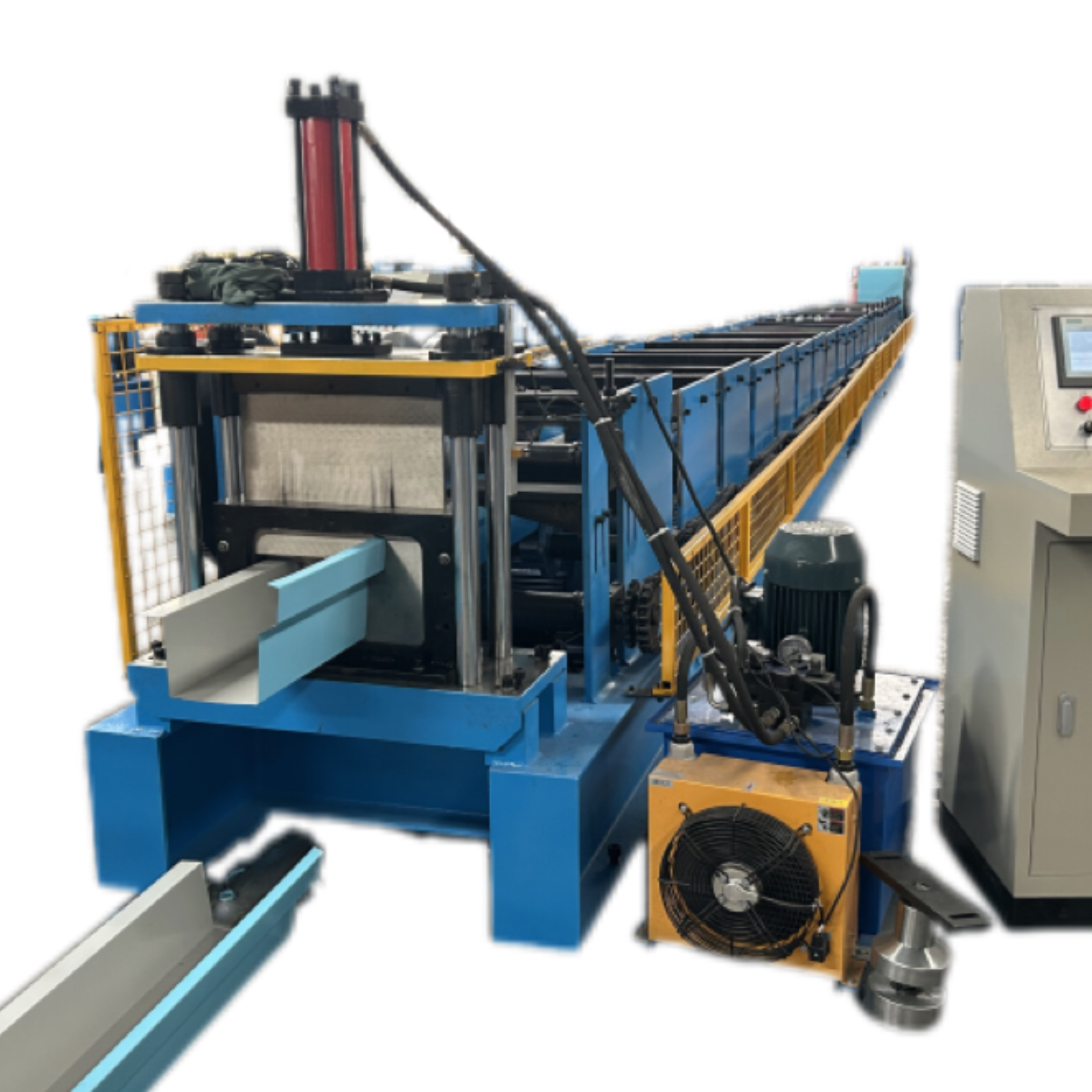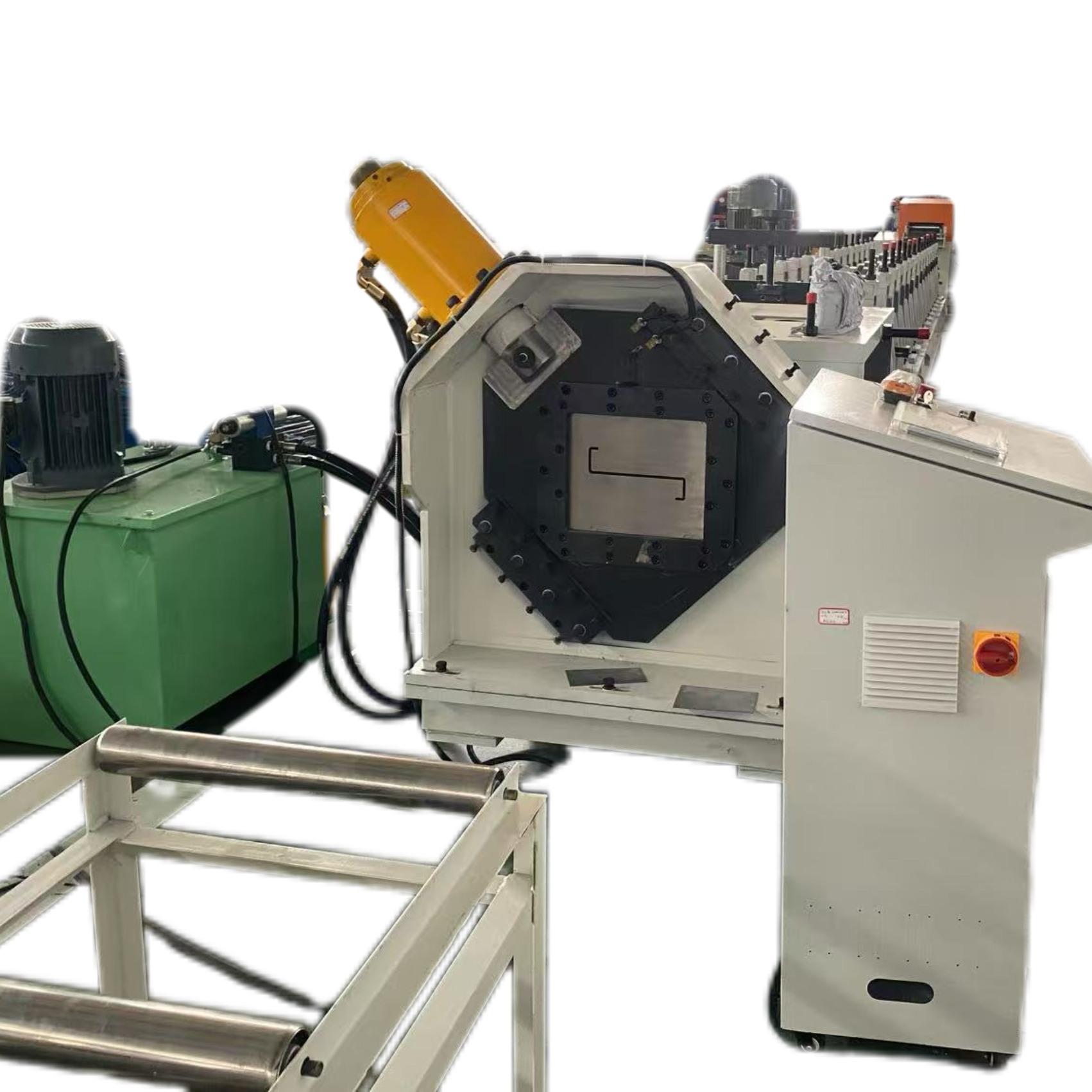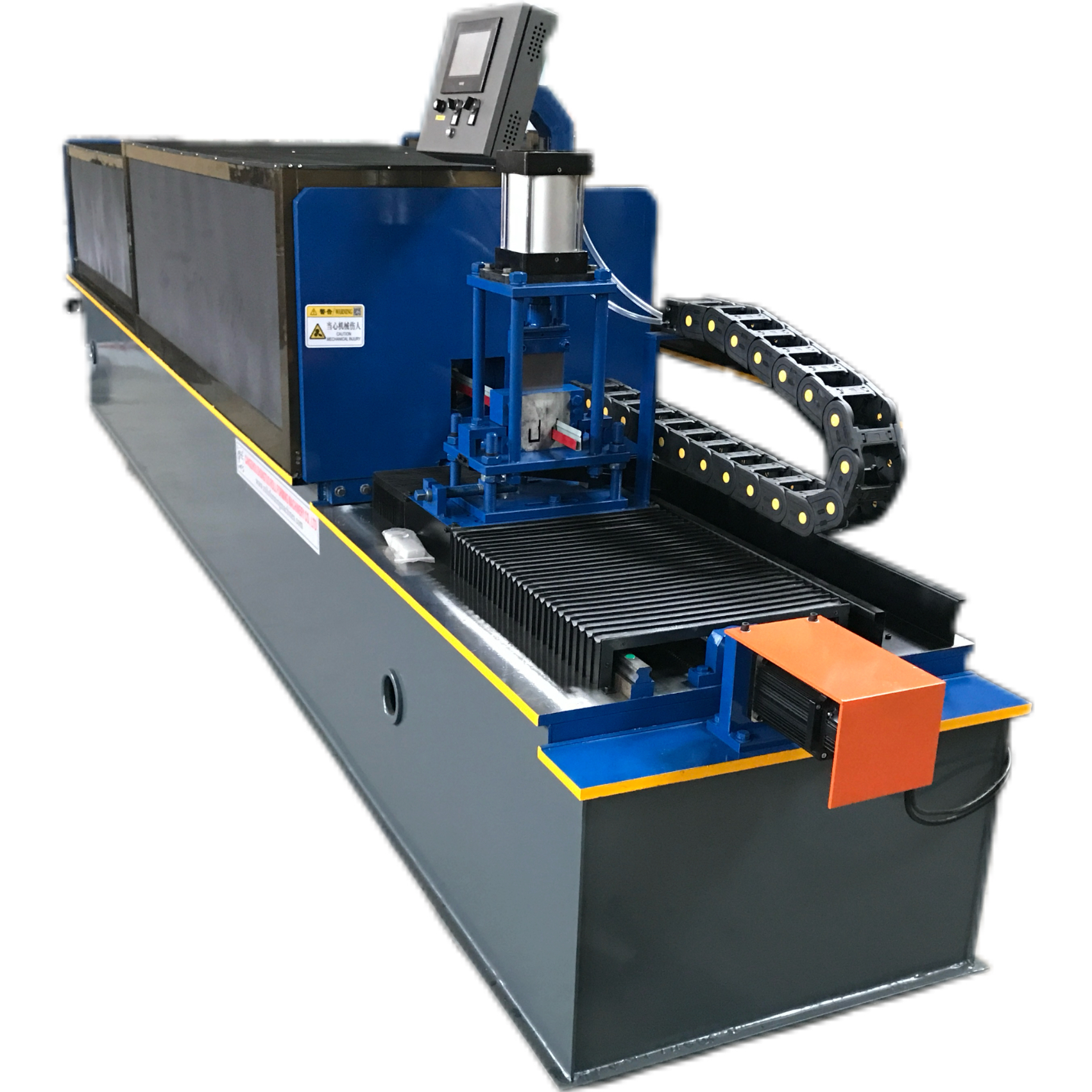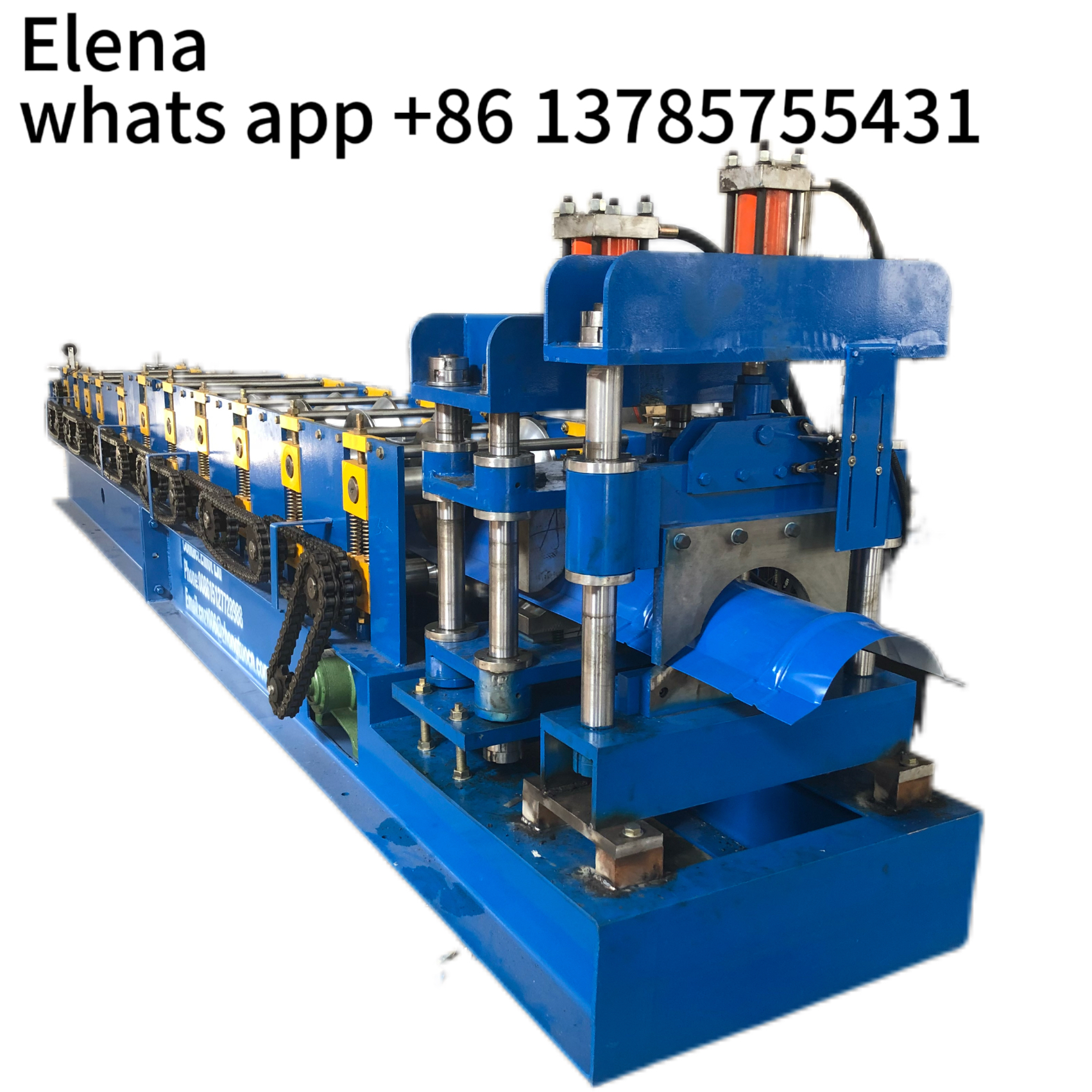Product Introduction:
Among the many components of the building, the gutter downspout equipment has an extremely important mission, although it may seem inconspicuous. They act like the “drainage guards” of the building, silently ensuring the normal operation of the building on rainy days, and protecting the building structure and the surrounding environment from rainwater.
1. Gutter: the pioneer of rainwater collection
Gutters, usually installed at the edge of the eaves, are the first line of defense to receive rainwater from the roof. Its main function is to collect rainwater flowing from all parts of the roof and direct it to the downspout, so as to achieve organized drainage. Imagine a downpour without gutters, rainwater will run down the roof, not only causing erosion on the exterior walls of the building, but in the long run, it may cause the wall coating to peel off, damage the masonry structure, and may form water around the perimeter of the building, threatening the stability of the foundation.
2. Downpipe: the transportation channel of rainwater
The downspout, as a key component connecting the gutter with the ground drainage system, is responsible for transporting the rainwater collected by the gutter vertically to the ground. It acts as a “drainage vessel” for the building, ensuring that rainwater can be drained quickly and in an orderly manner to avoid accumulation in or around the building.
The material of the downspout is similar to that of the gutter, and the common materials are metal and plastic. Metal downspouts such as aluminum alloy, stainless steel, etc., have high strength and durability, and can withstand large water impact forces. Among them, stainless steel downspouts are extremely corrosion-resistant and suitable for various harsh environments, but their cost is relatively high. Plastic downspouts such as PVC, PP (polypropylene), etc., have the advantages of light weight, low price, and easy installation, and are widely used in general construction. PVC downspouts are the most common type of plastic downspouts, which have good chemical stability and can effectively resist the erosion of chemicals such as acids and alkalis.
The diameter of the downspout needs to be determined based on factors such as the roof area of the building, the local rainfall, and the drainage capacity of the gutter. In general, the larger the roof area and the greater the rainfall, the larger the downspout diameter required. If the pipe diameter is too small, there may be poor drainage in heavy rainstorms, resulting in water accumulation in the gutters or even rainwater backflow. Excessive pipe diameters can lead to wasted material and increased costs. For example, for general re
sidential buildings, downspouts with a pipe diameter of 75mm or 100mm are more common; For large commercial buildings or industrial plants, larger diameter downpipes such as 150mm or 200mm may be required.

Product Attributes :
|
1.Formed Material
|
PPGI,GI,AI
|
Thickness:0.3-0.8mm
|
||
|
2.Decoiler
|
Hydraulic decoiler
|
Manual decoiler(will give you as free)
|
||
|
3.Main body
|
Roller station
|
15+16 rows(As your requirement)
|
||
|
Diameter of shaft
|
80mm solid shaft
|
|||
|
Material of rollers
|
45# steel, hard chrome plated on the surface
|
|||
|
Machine body frame
|
350 H steel
|
|||
|
Drive
|
Double Chain transmission
|
|||
|
Dimension(L*W*H)
|
7500*1600*1600(customize)
|
|||
|
Weight
|
9 Tons
|
|||
|
4.Cutter
|
Automatic
|
cr12mov material, no scratches, no deformation
|
||
|
5.Power
|
Main Power
|
5.5 KW
|
||
|
6.Voltage
|
380V 50Hz 3Phase
|
As your requirement
|
||
|
7.Control system
|
Electric Box
|
Customized(famous brand)
|
||
|
Language
|
English(Support multiple languages)
|
|||
|
PLC
|
Automatic production of the whole machine. Can set batch, length, quantity, etc.
|
|||
|
18.Forming Speed
|
8-12m/min 15-20m/min
|
The speed depends on the shape of the tile and the thickness of the material.
|
||
Pattern diagram:
Equipment Advantages:
1.Ensure the safety of the building and extend the service life
Unorganized drainage (such as free-falling water) will cause rainwater to directly wash the exterior wall, seep into the roof cracks or soak the foundation, which may cause problems such as wall cracking, roof leakage, and foundation settlement in the long term. The gutter downspout directs rainwater to the area away from the building through directional drainage, reducing the erosion of rainwater on the building structure from the source and significantly extending the service life of the building.
2.Strong adaptability to meet diverse needs
The equipment is highly flexible in terms of materials, specifications and design:
The material covers aluminum alloy (light weight and weather resistance), galvanized steel (high strength), PVC (low cost), etc., which can adapt to different climate zones such as high temperature, high humidity and severe cold;
For example, high-rise buildings can choose large-diameter downspouts (more than 150mm) to cope with heavy rainfall, and ancient buildings can choose copper gutters to match historical features, so as to meet the diverse needs of ordinary houses to special buildings.
3.Easy to install and low maintenance
Most materials (such as PVC, aluminum alloy) are light in weight, and the modular design is easy to transport and assemble on site, greatly reducing the difficulty and construction period of installation; Daily maintenance only needs to regularly clean up leaves, sediment and other debris in the gutter, check the tightness of the interface, simple operation, no need for complex technology, long-term use of controllable costs.
4.Improve the quality of the building, taking into account both function and aesthetics
Modern gutter downspouts have gone beyond a single function and enhanced the overall texture of the building through detailed design:
Concealed installation can avoid exposed pipes and damage to the building façade;
The surface treatment (such as electrostatic spraying, anodizing) can be customized in color, and the color tone of the building exterior wall is unified;
The natural patina formed by the copper gutter over time, the neat lines of the K-shaped gutter can also add a unique style to the building, achieving a “win-win situation of practicality and appearance”.
5.Assist in the utilization of rainwater, in line with the green concept
Some gutter downspout systems can be connected to rainwater recycling devices, and the collected rainwater can be filtered for irrigation, car washing, toilet flushing, etc., to improve water resource utilization. This design not only reduces the pressure of municipal water supply, but also reduces the impact of direct rainwater discharge on the urban pipe network, which is in line with the green environmental protection trend of modern buildings.
Whether it is to ensure the safety of the building, adapt to various scenes, or control the cost and take into account the aesthetics, the gutter downpipe equipment shows irreplaceable value and is the core advantage of the modern building drainage system.


Applications:
1. Civil construction
This is the most popular application scenario of gutter downspout equipment, which is directly related to the residential safety and quality of life of residents.
(1)Low-rise residences:
such as villas, townhouses, etc., most of these buildings have sloping roofs, gutters can fit the eaves shape (such as K-shaped gutters with sloping roof lines), and downpipes are installed along the exterior wall to direct rainwater to the courtyard drainage system, so as to prevent rainwater from washing away the exterior wall paint or seeping into the basement, and protect the use of outdoor spaces such as private gardens and terraces.
(2)Multi-storey/high-rise residential:
Buildings with large roof areas and dense occupants require higher drainage efficiency. Large-size gutters (such as width of more than 200mm) and multiple sets of downspouts (at least 2-3 per unit) are usually used, and the pipe diameter is selected according to the floor height (100mm-150mm) to ensure that the rainwater is quickly discharged during heavy rains, and prevent leakage caused by water in the roof and affect the lives of residents.
2. Commercial and public buildings
This kind of building has a large flow of people and complex functions, and the gutter downspout equipment needs to meet the drainage needs of high strength and high stability.
(1)Shopping malls and office buildings:
mostly flat roofs or long-span roofs, gutters need to cover the entire roof edge, and downpipes are installed concealedly along the façade of the building (such as embedded walls or decorative columns), which not only ensures drainage efficiency, but also does not destroy the modern and simple style of the building. For example, large shopping malls often use aluminum alloy gutters with 150mm diameter downspouts to cope with roof drainage pressure during peak holiday periods.
Schools and hospitals: This type of building focuses on safety and durability, and gutter downpipes made of galvanized steel or stainless steel are more popular, which can resist collision and corrosion in long-term use, and are convenient for regular maintenance (such as cleaning fallen leaves, checking interfaces) to ensure the safety of teachers, students, and patients on rainy days.
(2)Cultural and sports venues:
such as gymnasiums, convention and exhibition centers, etc., the roof is mostly arc-shaped or special-shaped design, the gutter needs to be customized to fit the roof, and the downpipe needs to match the large roof area (such as the pipe diameter is more than 200mm) to avoid rainwater hoarding during heavy rain and affect the normal use of the venue (such as concerts, exhibitions and other activities).
3. Industrial construction
Industrial scenarios have extremely high requirements for the reliability of drainage, and gutter downpipe equipment needs to adapt to the particularity of the production environment.
(1)Factories and warehouses:
equipment or materials are often stacked on the roof, and corrosive substances such as acid and alkali may exist in some industrial areas, so corrosion-resistant materials (such as PVC, FRP gutters) are mostly selected, and the downspout needs to be thickened and encrypted to prevent rainwater leakage from damaging machinery and equipment or stored goods. For example, gutter downpipes in chemical plants are treated with anti-corrosion coatings to prevent chemicals from attacking the pipes.
(2)Logistics park:
The roof area of the large-scale logistics warehouse is large and the span is long, the gutter needs to be designed in sections and reserved expansion joints (to cope with the deformation caused by temperature changes), and the downpipes are densely arranged along the outer wall of the warehouse to ensure that the rainwater is quickly discharged to the underground pipe network of the park, and does not affect the loading and unloading of trucks.


















